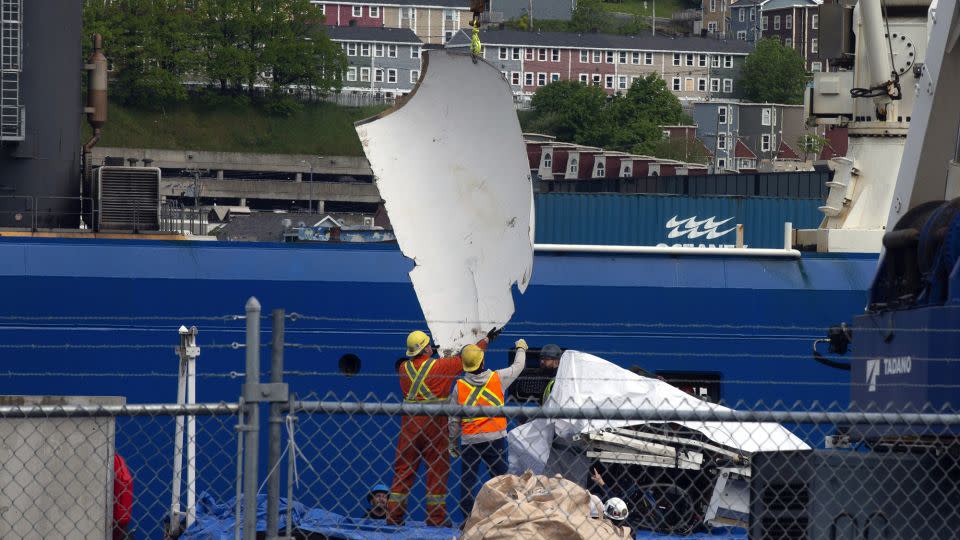A year after the Titan tragedy, a sub is planning to go back to the Titanic to make a point

A year ago Tuesday, the world watched in horror as a multinational search began for a commercial sub and five passengers that, days later, would end in tragedy.
The agonizing spectacle sent a chill through the small but growing community of deep-sea submersible enthusiasts. OceanGate, the controversial operator behind the ill-fated sub, folded shortly after officials revealed the vessel had imploded on its way down to the site of the Titanic.
With OceanGate closed for business, the market for Titanic sub tourism appeared to slam shut.
But rather than tanking the entire industry, the event created an opportunity for submersible operators to double-down on their messaging around safety, and cast OceanGate as a rogue startup.
One leading sub operator, eager to demonstrate that the Titan sub failed to live up to the industry standards that can make trips to the ocean floor relatively safe, is already planning its own journey to the wreckage of the Titanic, where Titan was headed before it collapsed.
“If there is any positive to draw from the situation, the legacy will be that there is further investment being made in deep ocean submersibles,” said industry leader Triton Submarines, in a statement.
In fact, just days after OceanGate disaster, the real-estate billionaire Larry Connor was on the phone with Triton’s CEO, urging him to build a sub that would reassure the world that sub travel, even as deep as the Titanic’s wreckage, could be done safely, according to the Wall Street Journal.
“I want to show people worldwide that while the ocean is extremely powerful, it can be wonderful and enjoyable and really kind of life-changing if you go about it the right way,” Connor told the WSJ.
Triton, through a spokesperson, told CNN that trip was in the early planning stages and that “we can’t share a timeline yet.”
OceanGate’s legacy
OceanGate, which shut down operations last July, had been a rising but controversial player in the tight-knit world of manned submersibles.
But in its pursuit of “increasing access to the deep ocean through innovation,” OceanGate frequently skirted regulations and pushed back against industry standards.
Notably, its founder Stockton Rush, who was one of the five people killed aboard Titan, insisted that his unconventional carbon fiber hull was safe even after experts warned him that it wasn’t as safe as the more-expensive titanium used by rivals.
“At some point, safety just is pure waste,” Rush once told journalist David Pogue. “I mean, if you just want to be safe, don’t get out of bed. Don’t get in your car. Don’t do anything.”
With a brand name uncomfortably similar to that of the ill-fated sub, Triton Submarines has spent the past year trying to distinguish itself from OceanGate.
Two of its main points: 1) OceanGate was a rogue operation that skirted regulations and ignored repeated warnings from the tight-knit community of deep sea explorers. 2) OceanGate’s sub designs were so experimental, no other commercial sub operation would ever replicate them.
Triton — which counts billionaire hedge fund manager Ray Dalio and filmmaker James Cameron among its investors — is quick to tout the credentials that OceanGate sidestepped, such as submitting its crafts to testing by third parties like the American Bureau of Shipping.
“The deep ocean is no place for compromise,” Triton said in its statement. “It should be very clear to everyone by now that the events in the North Atlantic, the manner in which the operation was run and the experimental nature of the craft, bears no relation whatsoever to a highly professional, safe and accomplished sector.”
The risk of death is the point
The technology needed to reach the Earth’s deepest nooks and crannies is still in its infancy.
But if the broader adventure tourism industry offers any guidance, the specter of death will only fuel demand.
Every year, about half the climbers who attempt to summit Mount Everest complete the journey, and at least a few of them die in the process. But, somewhat counterintuitively, the deadlier the season, the more interest tends to spike the following year.
Permits for Everest increased significantly in the years after 1996, a season that ended the lives of 12 climbers and became the subject of international media attention. And last year was also an especially fatal season, with 17 climbers dying on the route.
That led to a 100% increase in business for Furtenbach Adventures, an Austria-based expedition operator.
“There was again the effect of Everest getting more attention after this deadly season,” founder Lukas Furtenbach said in an interview.
But he sees a change taking root from previous years when interest spiked. Lately, he says, “it looks like there’s more readiness from the client to pay a premium for higher safety margins. … The the statistics show very clearly that the less you pay for your Everest expedition, the higher the risk to die.”
That trend toward extra precaution was echoed by Philippe Brown, founder of luxury adventure travel firm Brown and Hudson.
In the immediate aftermath of the Titan’s demise, before OceanGate folded for good, Brown said his firm still had a long waitlist for its Titanic tours, and that business had even ticked up.
“The interest will always be there for boundary-pushing things,” Brown said in an interview Monday. “But what has happened is that people are way more sensitized to risk, not just in this kind of thing, or summiting Everest, but across chart travel more generally.”
For more CNN news and newsletters create an account at CNN.com

 Yahoo Finance
Yahoo Finance 